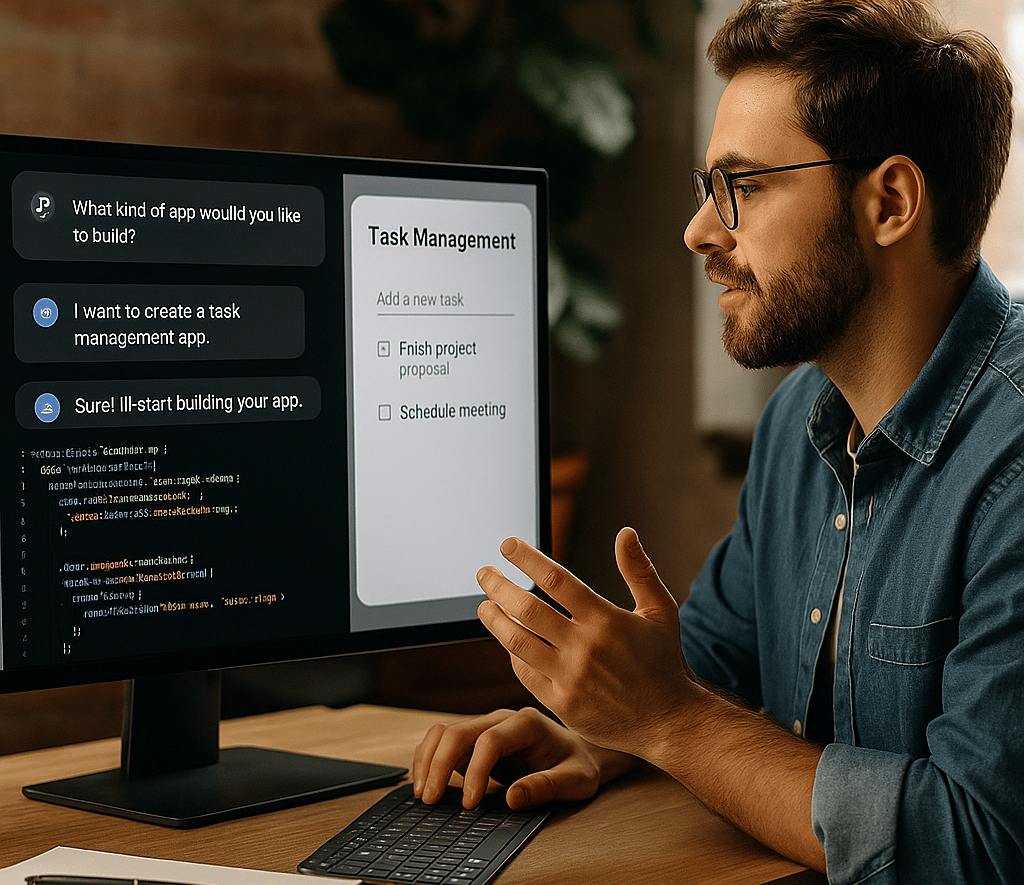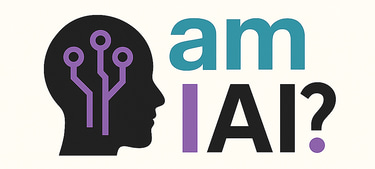Build Software with Prompts and Vibes: How Vibe Coding Is Revolutionizing App Development
Discover how vibe coding is changing software development—creatives, founders, and teams are building apps with AI prompts and no coding required.
TECHAICODINGSOFTWARE DEVELOPMENT
Haily Fox
7/27/20255 min read


If you’ve ever wanted to build an app by just describing how it feels—without touching a single line of code—welcome to the world of vibe coding.
Imagine explaining your app idea to an AI, and 10 minutes later you have functional code necessary to make it, and launch it. That is vibe coding, and it is a lot more than just a buzzword or trend.
Vibe coding refers to using AI to build software by providing natural-language instructions—no technical skills needed.
Vibe coding is a new term making waves in the AI development and no-code app space. Maybe you’ve heard it in reference to Andrej Karpathy, co-founder of OpenAI and former Senior Director at Tesla. Or maybe you’ve seen it tossed around Tech Twitter. Either way, the likelihood of the subject being met with awe and amazement is just as likely as it being met with skepticism and concern.
So, what exactly is vibe coding, and should you start building with it? I’m here to offer my perspective as an AI Consultant and Expert, so let’s dive into the real-world benefits—and the not-so-glamorous tradeoffs—of vibe coding with AI.
What Is Vibe Coding?
Vibe coding, coined by AI expert Andrej Karpathy in early 2025, refers to using AI to handle nearly all aspects of coding for projects ranging from app development to website design. Humans guide the general “vibe” of the project, often with little or no coding experience.
The process is simple: you describe your intentions, visions, and ideas in natural language prompts. The AI used could range from ChatGPT to Deepseek or Claude. The AI then writes the logic, builds the interface, and can even deploy the app. You can then "edit" the code with prompts—asking it to add a login page, make it mobile-responsive, or visually shift the "feel" by altering layouts or colors.
A great example is Karpathy’s MenuGen app, which takes images of restaurant menus and turns them into structured data that’s readable and searchable. It could translate menus for tourists, make them accessible to the visually impaired, or improve searchability for diners. The unique part? Karpathy built the app using AI tools like Cursor and GPT, without writing traditional boilerplate code. It handled payments and deployed at scale.
Recently, I helped a Public Relations company create an in-house app for managing their clients and keeping appointments. It was a simple app design, but with AI, I had them finish this process in under an hour. They were saved the cost of hiring software designers, and now use AI to help edit the code if needed.
Why Vibe Coding Is Gaining Momentum
With this context, it’s no wonder developers are buzzing. For solo founders, non-technical creatives, or businesses looking to spin up admin dashboards, inventory trackers, or MVPs—this access is game-changing. Instead of hiring a developer or learning to code, you can describe your idea and get to the next step instantly.
To say it boosts productivity is an understatement.
Thanks to multimodal input (voice, image, and code), it’s now possible to build software using more natural interactions. Tools like GitHub Copilot have evolved from auto-completing code to acting as autonomous agents that can plan and build entire features. This marks a shift from "coding with help" to delegating software builds to AI.
Platforms like Cursor, Replit, and AI-native IDEs are transforming developer workflows. Cursor, for instance, offers context-aware AI chat inside your code editor—you can ask, “What does this function do?” and get instant answers. Replit’s AI can deploy a working web app from a single prompt. It doesn’t just finish your line of code—it finishes the whole file.
Where Vibe Coding Works Best:
MVPs for startup ideas
Internal tools and dashboards
Rapid prototyping
Simple data processing tools
Personal productivity apps
Trade-Offs You Shouldn’t Ignore
But let’s be real: every tool has trade-offs, and vibe coding is no exception. Before switching your team to a vibe-coded workflow, consider these risks:
Inconsistent code quality: AI-generated code often lacks clean architecture, reusability, and testing frameworks. It may be harder to debug or maintain, especially when reused.
Security vulnerabilities: Without human oversight, AI might store passwords in plain text, omit input validation, or expose API keys. These are major red flags for production environments.
Lack of understanding: If you didn’t write the code, it’s harder to debug or scale it. AI won’t test for bugs unless explicitly asked to.
Not enterprise-ready: While great for prototypes and MVPs, AI-built apps might not meet the reliability standards of production-level software.
Should We Embrace Vibe Coding?
I’m optimistic about vibe coding, especially for creatives, founders, and lean teams. But I’m also cautious.
Like everything in AI, balance is key. We shouldn’t ignore how vibe coding empowers people, but we also shouldn’t toss out deep software knowledge or the value of human engineers.
You’ll hear me say this a lot: AI is a brilliant assistant—it handles grunt work but isn’t a replacement for human intelligence. Think of AI like an intern or assistant. It still needs management, direction, and supervision.
Final Thoughts
Like any tech trend, how you use vibe coding determines its impact. Use it wisely, and it’s a force multiplier. Use it blindly, and it’s a liability.
Drop a comment or Follow me for more human insight on AI.
I post weekly demos, insights, news and more related to AI.
FAQs
Q. What is vibe coding, and how does it actually work?
A. Vibe coding is called that because it’s the practice of giving AI a general “vibe” for a software, and getting code for it without doing an ounce of coding yourself — or even knowing how to code.
Q. Do I need to know how to code to use vibe coding tools effectively?
A. Technically, no. However, it does help to have coding knowledge when considering things like cybersecurity or fixing errors. It could also be said that even if you know how to code, it doesn't mean that AI-produced code will necessarily make sense, as AI doesn't always code in logical, predictable lines like humans do.
Q. How can vibe coding help solo founders and non-technical professionals?
A. While I think it is not advisable to entirely vibe code a software intended for commercial use, there is absolutely a time and place where it’s useful. Creating an app for your company’s employees to collaborate, for example, is likely fine if there is no vulnerable information being shared.
Q. Can I really launch a working app using only AI prompts?
A. Yes, you can. It might not be purely as simple as a prompt, as you may need to do some research and put planning into what you want to include in your code. The number of steps involved will vary. For example, if you have a specific website layout in mind, it will likely need to be done piece by piece, as coding for the whole thing at once will probably be too messy.
Q. Is AI-generated code secure enough for real-world use?
A. It depends on what we are talking about. If it's going to create software that will hold personal information — such as medical or banking data — then I would say absolutely not. Human oversight is essential for cybersecurity.
Q. Will vibe coding replace traditional software developers?
A. Not likely, or at least I hope not. Human oversight is still very much needed in the field of software development. If anything, it's more likely that vibe coding will just help software developers with their workflow rather than replace them.
